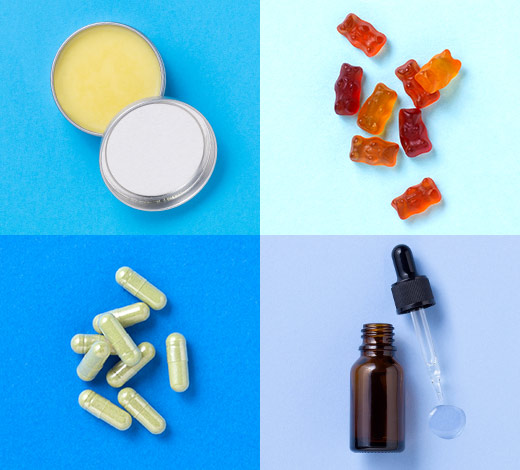

The number of adults diagnosed with diabetes in the U.S. has nearly quadrupled from 5.5 to 21.3 million over the past 32 years, with 1.7 million new cases each year, according to the CDC.
If this trend continues, 1 out of every 3 adults in the U.S. could have diabetes by 2050. Luckily, ongoing research has helped us learn more about this growing disease, and about the possibility of its cure.
There is nothing that can be done for diabetes caused by genetics (Type I), but for preventable diabetes (Type II), “an ounce of prevention is worth a pound of cure” as Ben Franklin said. The best “cure” for Type II diabetes is to proactively maintain a healthy weight, exercise regularly, and eat a healthy diet with not too many carbohydrates or fats.
Once the diabetic process begins, there are several new treatments that may lead to a future impact on the spread of diabetes.
Medication: As of 2014 there are around 100 drugs in development for Type II diabetes. Medications such as Farxiga, Invokana, Jardiance are SGLT2 inhibitors and help the body eliminate sugars. Longer acting insulins such as Tresiba help control and stabilize blood sugar. And there is an inhaled insulin called Afrezza for those who simply cannot deal with needles.
Natural: There are many reports of various vitamins and herbs affecting blood sugar levels. But there is still much conflicting evidence. None of the herbs and supplemebts have been found effective enough to be used as treatments. The best non-medicine treatment is still diet and exercise.
Surgical: There are a couple surgical options that have been shown to be affective for some people. Because there are several options and each is specific to a certain criteria, it is best to discuss this option with your doctor.
Investigational:
- Pancreas transplant has been done experimentally for extreme cases of diabetes that cannot otherwise be controlled. This procedure requires lifelong immunosuppressive medication.
- Islet cell transplant, transplanting just the cells and not the entire pancreas has been done experimentally, and shows interesting promise, but is also only done in extreme cases.
- Artificial pancreas is a pump device that delivers insulin on a real time basis with continuous calculations to regulate blood sugar. A couple large scale studies are in process and could lead to a way to regulate diabetes in those with more advanced disease.
- For Type I autoimmune Diabetes, there has been much research into medications such as Gleevec that suppress the immune system. Also vaccines against elements that can cause Diabetes. These are still in early stages of investigation but show great promise.
As you can see there have been many great advances in the treatment diabetes, and some interesting things being studied. But the best cure for many patients for Type II Diabetes is still the ounce of prevention of diet, exercise and weight control.
By Chester Robson, DO, MHCDS, FAAFP
Chester Robson is the Medical Director of Clinical Programs and Quality for Walgreens. He is dedicated to improving the healthcare experience through patient-centered technology, evidence-based medicine, and innovative delivery models.
Sources
Centers for Disease Control and Prevention. National Diabetes Statistics Report: Estimates of Diabetes and Its Burden in the United States, 2014. Atlanta, GA: US Department of Health and Human Services; 2014.Retrevied November 10, 2015 from http://www.cdc.gov/diabetes/data/statistics/2014StatisticsReport.html
U.S. Food and Drug Administration. (2015, September 25). Retrieved November 5, 2015, from http://www.fda.gov/newsevents/newsroom/pressannouncements/ucm464321.htm
Type 1 diabetes. (2014, August 2). Retrieved November 5, 2015, from http://www.mayoclinic.org/diseases-conditions/type-1-diabetes/basics/treatment/con-20019573
New Type 2 Diabetes Medications. (2015, October 28). Retrieved November 10, 2015, from http://www.webmd.com/diabetes/features/new-diabetes-medications?page=2
Diabetes mellitus type 2: Insulin treatment (Beyond the Basics). UpToDate. Retrieved November 10, 2015, from http://www.uptodate.com/contents/diabetes-mellitus-type-2-insulin-treatment-beyond-the-basics?source=see_link
Foundations of Care: Education, Nutrition, Physical Activity, Smoking Cessation, Psychosocial Care, and Immunization Diabetes Care 2015;38(Suppl. 1):S20–S30. Retrieved November 10, 2015, from http://care.diabetesjournals.org/content/suppl/2014/12/23/38.Supplement_1.DC1/January_Supplement_Combined_Final.6-99.pdf
NIDDK Recent Advances & Emerging Opportunities 2015. http://www.niddk.nih.gov/about-niddk/strategic-plans-reports/Pages/NIDDK-recent-advances-emerging-opportunities-2015.aspx


